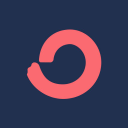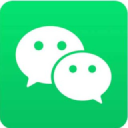I Built A $216K/Year Personal Finance Blog By Mastering Pinterest
Hello! Who are you and what business did you start?
Hello! Thanks for inviting me here today!
My name is Ling Thich and I started my finance blog, Finsavvy Panda near the end of 2017. During that time, I felt empty and unfulfilled with my life and job as an Analyst at a bank. Although it was a comfortable and stable job, there was a calling within me to do something different.
Whether you’re using Google searches, Pinterest, or Instagram for traffic - it is SO important to diversify whatever you can in your business. Similar to investing in stocks and bonds, I diversify my income stream by not putting all my eggs into one basket.
That something different was exploring different side hustles and business ideas. After trying many things, I eventually started my blog to see where it would take me.
On the blog, I mainly talk about how to budget, save money, and earn extra money. I also give blogging tips and share my story of how I left my job at the bank to become a full-time blogger.

Download the report and join our email newsletter packed with business ideas and money-making opportunities, backed by real-life case studies.

Download the report and join our email newsletter packed with business ideas and money-making opportunities, backed by real-life case studies.

Download the report and join our email newsletter packed with business ideas and money-making opportunities, backed by real-life case studies.

Download the report and join our email newsletter packed with business ideas and money-making opportunities, backed by real-life case studies.

Download the report and join our email newsletter packed with business ideas and money-making opportunities, backed by real-life case studies.

Download the report and join our email newsletter packed with business ideas and money-making opportunities, backed by real-life case studies.

Download the report and join our email newsletter packed with business ideas and money-making opportunities, backed by real-life case studies.

Download the report and join our email newsletter packed with business ideas and money-making opportunities, backed by real-life case studies.

















